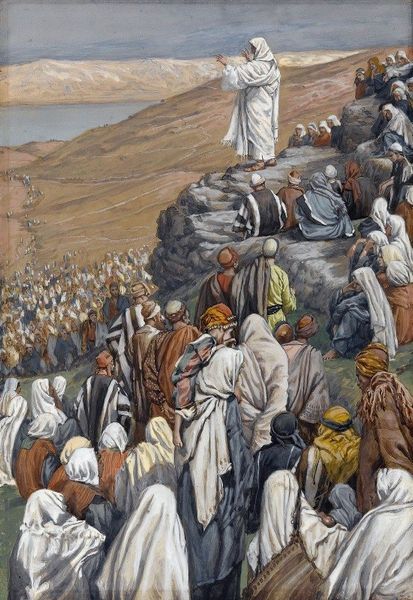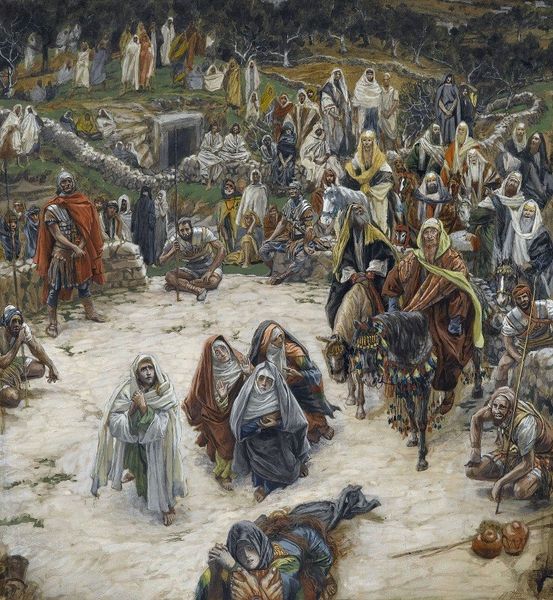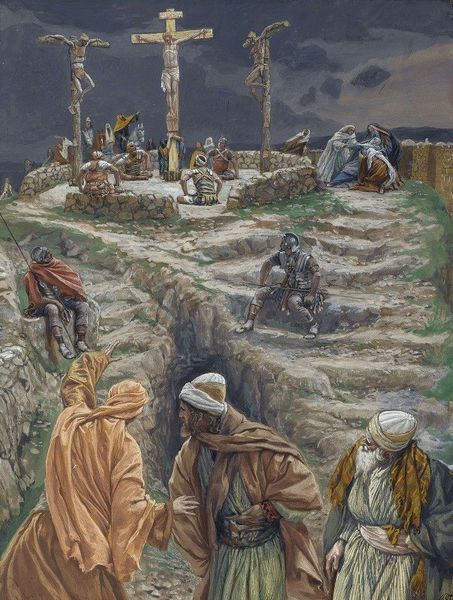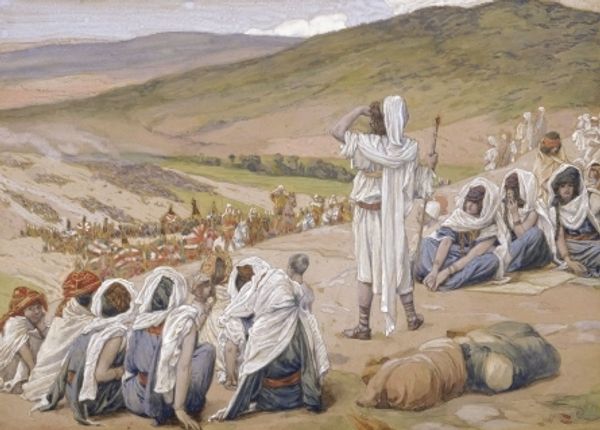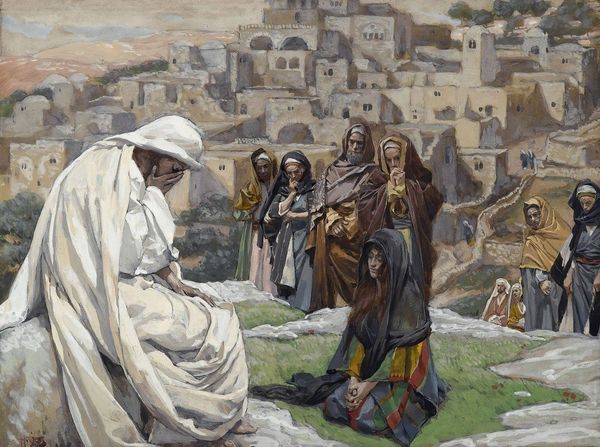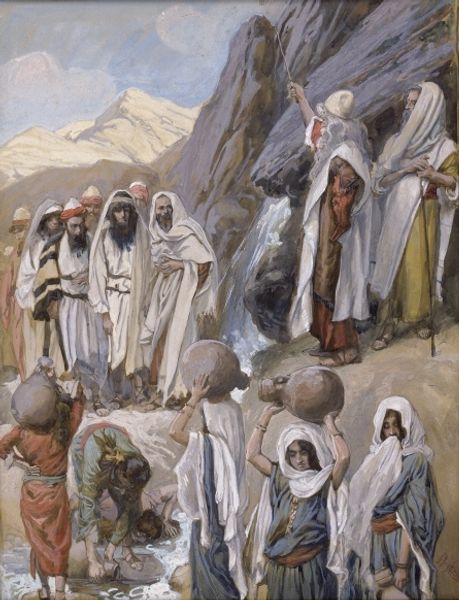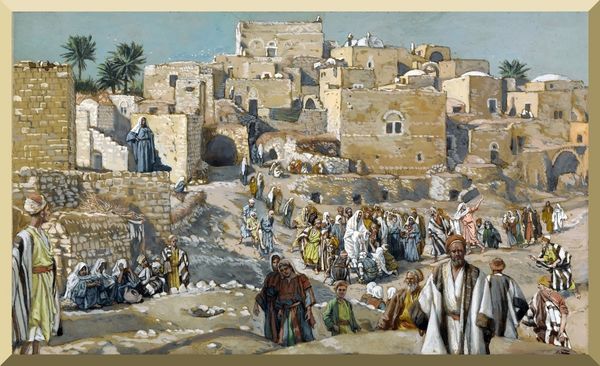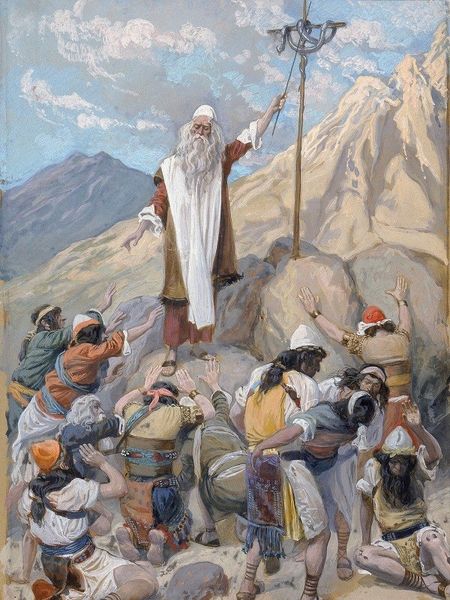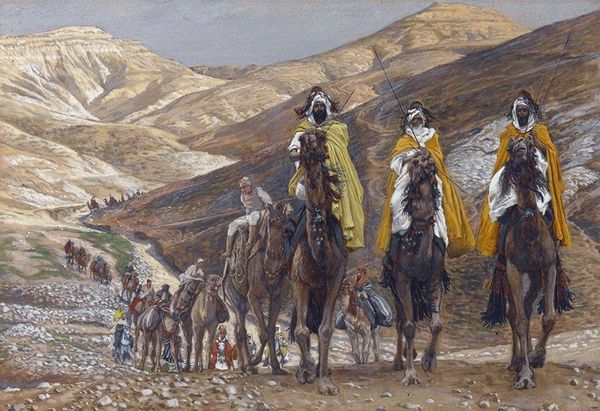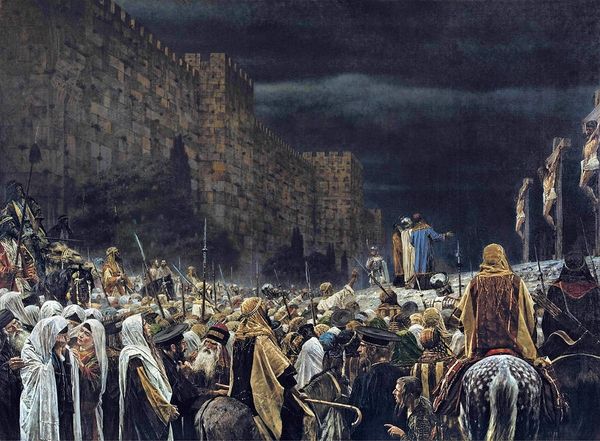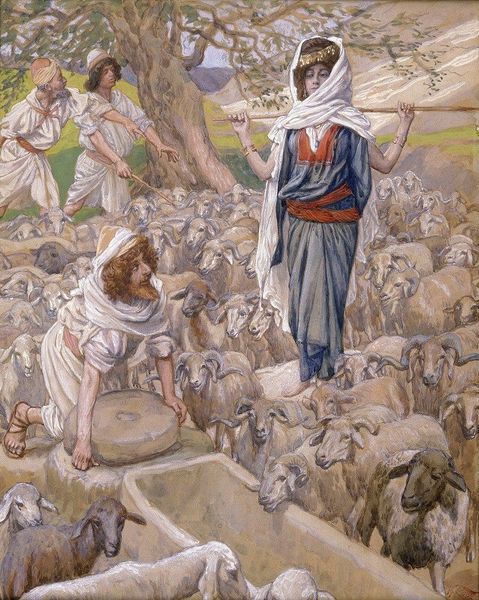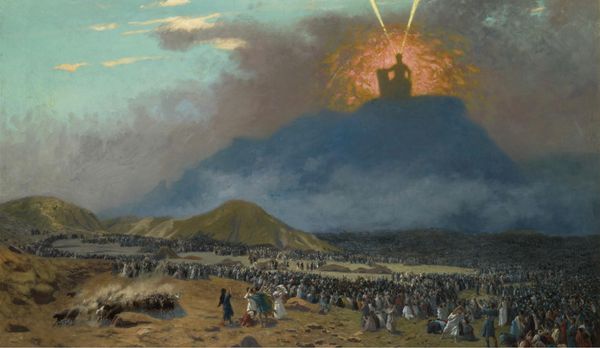
painting, watercolor
#
narrative-art
#
painting
#
oil painting
#
watercolor
#
watercolour illustration
#
genre-painting
#
history-painting
#
watercolor
#
realism
Copyright: Public Domain: Artvee
Editor: James Tissot's "The Miracle of the Loaves and Fishes," made between 1886 and 1894, is just amazing. It feels like this watercolor brings an epic scene to life. All these people scattered on the hillside... it's visually fascinating, almost like a panoramic photograph from that era. What kind of statement was Tissot trying to make by choosing watercolor to depict this huge scene? Curator: Well, that's a really astute observation. Tissot's choice of watercolor is fascinating given the scale of the subject matter, isn't it? In the late 19th century, artists who, like Tissot, focused on historical subjects often did so in enormous, history painting formats in order to promote particular political interpretations. In this case, he opted for watercolor - in an era increasingly obsessed with "realism." Given the painting's ostensible religious theme, I can’t help but wonder what message he sought to impart. What do you notice about the different social groups and their relationships depicted in the picture? Editor: I see people lining the hillsides who look as though they were waiting in line to receive their daily allotment of something essential. In this watercolor, are the crowds meant to be awed by Christ's Miracle, or are they a manifestation of an underlying social commentary of inequity and desperation? Curator: That’s a possibility! Tissot often inserted subtle commentary in his work regarding political ideas. In an era defined by wealth gaps and rapid change, he made a powerful, yet complex work. Do you notice other choices Tissot makes about this moment to invite a response? Editor: The way Tissot contrasts the abundance of the miracle with what seems like the humble status of those receiving food is remarkable. I'd say it brings both reverence and raises important questions about social disparities. Curator: Precisely! Understanding how artists like Tissot used familiar narratives and images to convey both religious piety and social critique helps us understand not only the art, but the era itself. Editor: I agree! I'm definitely seeing this painting, and Tissot’s larger work, in a whole new light now.
Comments
No comments
Be the first to comment and join the conversation on the ultimate creative platform.
